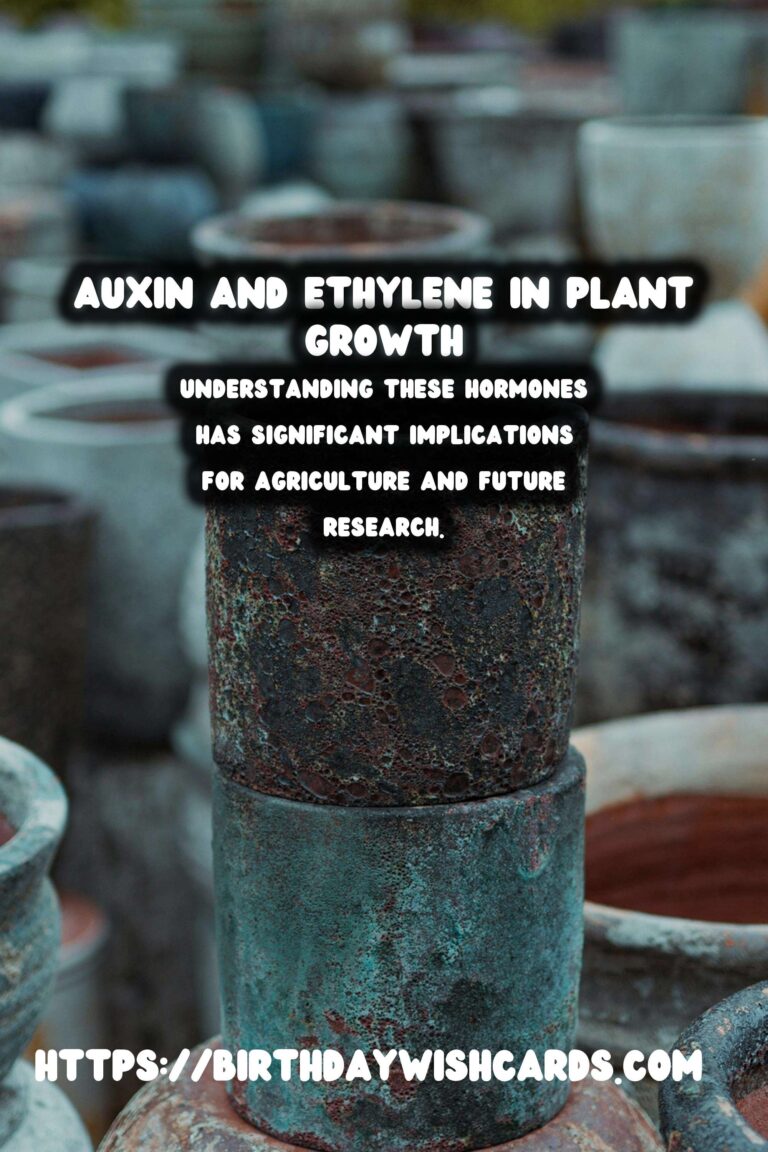
Plants are incredibly complex organisms that rely on a range of hormones to regulate their growth and respond to environmental stimuli. Among these hormones, auxin and ethylene play pivotal roles in shaping plant behavior and adaptation. Understanding these hormones is essential for anyone interested in botany, agriculture, or horticulture.
The Role of Auxin in Plant Growth
Auxin is a crucial plant hormone that primarily influences cell elongation, which is vital for plant growth. It is predominantly produced in the shoot tips and is known for its ability to mediate phototropism, the process by which plants grow towards light. Auxin achieves this by causing the cells on the shaded side of the plant to elongate more than those on the light-exposed side, resulting in the bending of the plant towards the light source.
Additionally, auxin plays a significant role in root development. It promotes the differentiation of vascular tissues and is involved in the formation of lateral and adventitious roots. This hormone also regulates other developmental processes such as apical dominance, where the main central stem of the plant grows more vigorously than the side stems, ensuring that the plant grows upwards.
How Ethylene Influences Plant Physiology
Ethylene is a gaseous hormone that is involved in various plant processes, including fruit ripening, leaf abscission, and stress responses. Unlike auxin, ethylene is often associated with the aging process in plants. It is produced in response to stress conditions such as drought, flooding, and mechanical wounding.
One of the most well-known functions of ethylene is its role in fruit ripening. It promotes changes in texture, color, and sugar content, making fruits more appealing for consumption. This is why fruit growers often use ethylene treatments to ensure even ripening and to synchronize fruit harvests.
Ethylene also plays a crucial role in leaf abscission, where it facilitates the shedding of leaves. This process is essential for plants to conserve water and energy during unfavorable conditions. Moreover, ethylene mediates the plant’s response to biotic and abiotic stress, helping plants adapt to challenging environments.
The Interaction Between Auxin and Ethylene
The interaction between auxin and ethylene is complex, as these hormones can influence each other’s production and action. In many cases, they work synergistically to regulate plant growth and development. For instance, in root development, auxin can enhance ethylene production, which in turn modulates root growth patterns and responses to environmental cues.
However, there are scenarios where auxin and ethylene can have antagonistic effects. For example, in leaf abscission, auxin tends to inhibit the process, whereas ethylene promotes it. The balance between these hormones determines the timing and extent of leaf drop, which is crucial for the plant’s survival.
Practical Applications and Future Research
Understanding the roles of auxin and ethylene in plant physiology has significant implications for agriculture and horticulture. By manipulating these hormones, growers can optimize plant growth, improve crop yields, and manage post-harvest fruit ripening. For example, synthetic auxins are used as herbicides to control weed growth, while ethylene inhibitors are employed to prolong the shelf life of fruits.
Future research is likely to focus on uncovering the molecular mechanisms underlying auxin and ethylene signaling pathways. This knowledge could lead to the development of new strategies for enhancing plant resilience to climate change and other environmental stresses.
Conclusion
Auxin and ethylene are critical to understanding how plants grow and respond to their environment. Their roles are varied and often interconnected, highlighting the complexity of plant hormone interactions. As research progresses, our ability to harness these hormones for agricultural advancement continues to grow, offering promising prospects for sustainable food production.
Auxin and ethylene are key plant hormones that regulate growth and response to environmental stimuli. Auxin primarily influences cell elongation and is crucial for phototropism and root development. Ethylene is involved in fruit ripening, leaf abscission, and stress responses. Auxin and ethylene can work synergistically or antagonistically, affecting plant development. Understanding these hormones has significant implications for agriculture and future research.
#PlantHormones #Auxin #Ethylene #Botany #Agriculture

